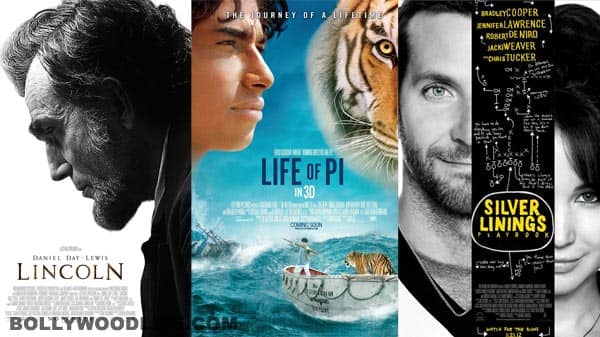When people of similar frequencies come together, output is not a simple sum of individual work, but exponential. In science we term this phenomenon as resonance. Output at this stage is beyond any logical limit. Three young kids, with different family backgrounds and outlook meet during their graduation days at IIT-Bombay campus and become close friends. Although, individually they are in sync, but the same is not true for their interaction with the world. How will their relation withstand the conflict of family and society pressure? How do their characters shape out, as they traverse from an educational environment through the corporate world to the realm of the social-political world? Inspired by the real events across the globe from the last decade, Ravindra Shukla brings you the characters based story – struggle and triumphs of young generation and their relevance in the current socio-eco-political era.
Plot/Context -
Book is inspired by some of the most prominent IITian’s personality and their journey from academic world to the social-political world. It is based on the actual events from the last decade across the globe (IIT-B campus, Silicon Valley – California, Wall Street – NYC). It covers the journey of three youth - their peak vibrant period between 18 years and 26 years and three critical phases of life – Academic, Corporate and Social-political world.
The story revolves around the lives of three friends in IIT, one girl and two guys. The book goes through the ups and downs in their lives (college life, personal life, professional life). Depiction of love relation and friendship during academic life is very meaningful and realistic. In corporate and professional section – plot covers the glamour and up/down of Wall Street. Difference in Silicon Valley entrepreneur’s passionate interest vs glamour and manipulation of Wall Street has been described beautifully. Finally journey takes you to the current social struggles people facing in country and their transition to political level.
We can relate to protagonist a lot who in one line is "a brilliant mind who chooses to follow his heart". The best part of the book is the discussion between characters which stimulate your mind and heart at the same time, a great mix of philosophy and logic in these discussions. Language is very simple, which makes it a very easy read as well.
Character based story inspired by international events – 1996 thru 2006
- Campus academic life (Relation between three close friends, Richita-Rahul love relation, students-faculty elation, Craze for credit race in academic world)
- Middle class family conflicts – Decision based on security/insecurity, generation conflicts
- Silicon Valley VS Wall Street in US – Entrepreneurship (Creator) VS Wall Street (Deal Maker)
- Glamour of making millions/successful life, The Rat race and Quality time concept
- Corporate world: USA Wall street life, Multi Billionaire IPO, Internet/wireless/emerging technology Boom/Burst
- India social-political reform movement (RTI) – Entry of young and rich self-made persons in politics
- Integrating educational institute and channelizing youth energy to single platform to address issues country facing today
Main Characters
Richita – She is combination of beauty and brains. She comes from an upper middle class. Her father, Dr. Deen Dayal, is a professor in Lucknow University and is in very powerful position in state politics. He is very protective of Richita. Mother plays a key role in shaping Richita character. Richita – a smart and beautiful girl – tries to follow family and society norms till the end when she cannot ignore her own consent.
Rahul – Son of an Air-force fighter pilot officer, who lost his life in Kashmir in 1990 when Rahul was still in school. Very sharp but highly emotional character, he goes with his heart and believes in instant action (Genius in mind, socialist by heart, rebel against anything wrong in society). Although miles away from glamour and charm of any girl, he could not resist Richita beauty and attitude. Their relation attaches new meaning to eternal love.
Neerav – Comes from a wealthy businessman family. He knows what is right/wrong but flows with current flow in life. He follows predefined path, focuses on career and success. He is capitalist in belief. Rahul is his best friend. Neerav enjoys life to full extent, is not an emotional character but knows where real talent lies in society and corporate world.
About Author – Ravindra Shukla
Ravindra Shukla is based out of San Diego, California (US citizen/Indian OCI). He shuttles between California-New York and Bombay. He is subject matter expert in emerging technology and service oriented architecture. He is married to Stuti Misra and living with his wife and two kids (Anchita and Richita).
Educational background –
- Graduate from IIT Bombay
- Published white papers in technical journal
- Conducted webinar on latest technology and Architecture
Profession –
- Subject Matter Expert/Lead in the Emerging Technology Div (SAP HANA – Real-time Business/Data Analytic) of IBM ISA South Asia Pacific
- 19 Year of IT Experience
- 16 Years of USA experience with top consulting firms (PriceWaterhouseCoopers and IBM)
- Managed Business Accounts in Wall Street – New York and Silicon Valley California
- Owner of Business Analytic firm in USA
Creative Interest –
- Author of the book – A Maverick Heart: Between Love and Life
- Author movie script - Richita
- Trained script writer and Director from New York, USA
- Guest speaker in many social events
- Members of Film writer association
- Other interest – Sports, Literature and Movie direction/writing
MISC –
- Native Place – Allahabad UP
- College – Ruia College, Matunga, Bombay
- Graduation – IIT-Bombay
- Father – Retired – Faculty (English, Parel, Bombay), now settled in Allahabad
- Brother – CEO/Head for Solar Power Energy – Asia, Europe, Middle East. ABENGOA, Spain)
Grab your copies from Flipkart | Homeshop18 | Infibeam














Post a Comment